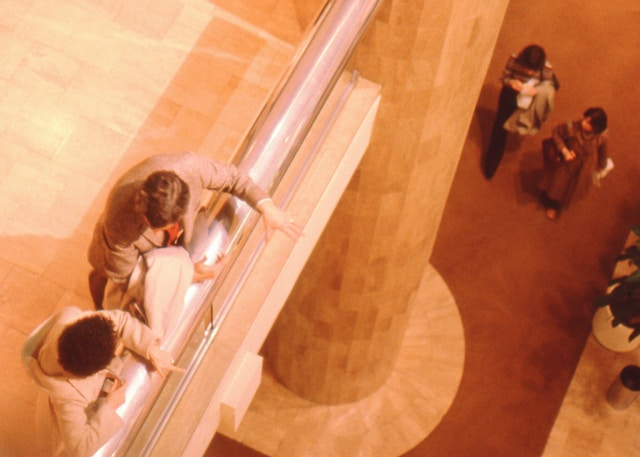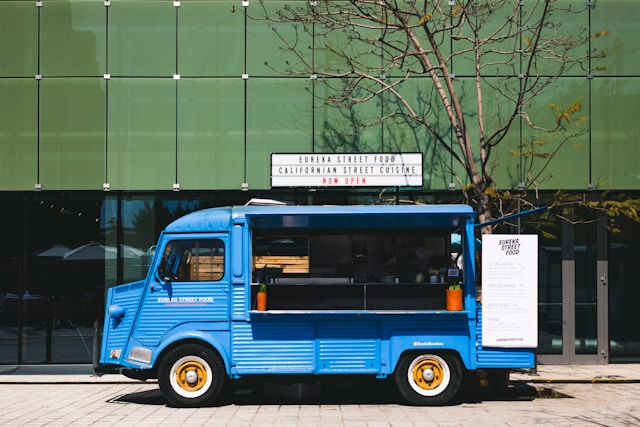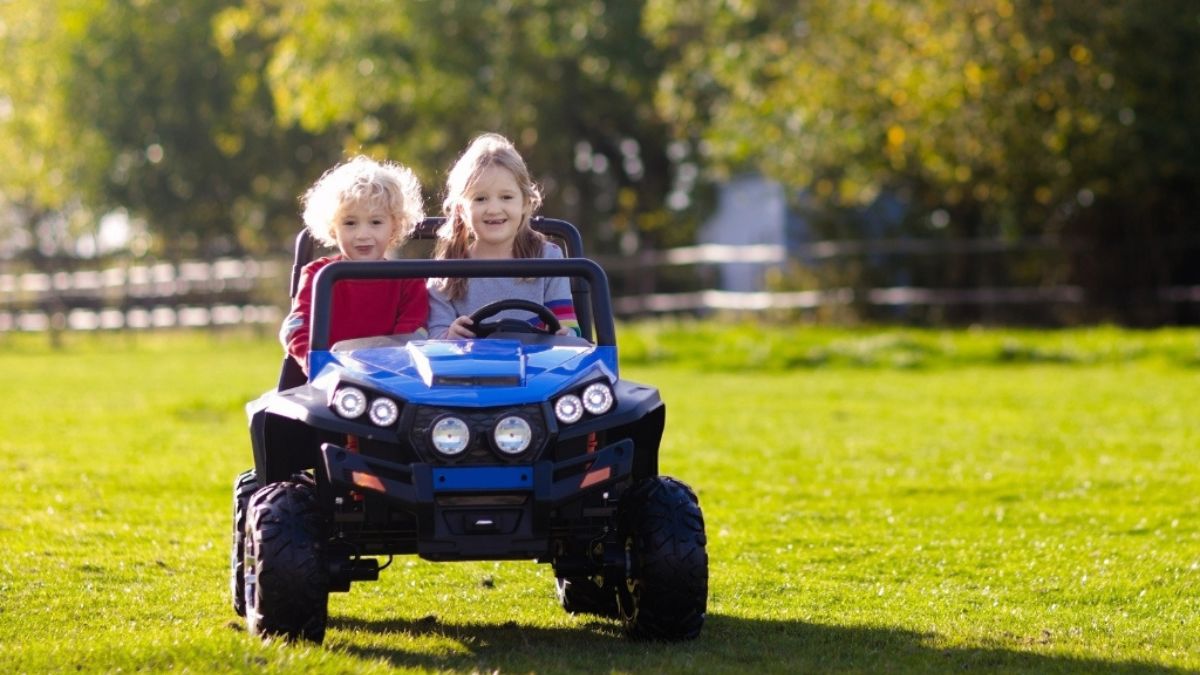LIFESTYLE
How Moving to Chicago Transforms Your Social Life in Surprising Ways

City life often promises new energy, but Chicago actually delivers. The people, the pace, and the possibilities reshape your days in ways you don’t expect. From the first week, you notice how neighbors interact, how strangers chat in line, and how often you’re invited somewhere. That’s what makes moving to Chicago so powerful, it doesn’t just change your location; it starts to enhance your daily life in real and exciting ways.
Big City, Bigger Conversations
At first, the city may seem too big for connection. But the opposite is true. You’ll find conversations in line at Trader Joe’s, at dog parks, and even during your morning commute. People here enjoy sharing recommendations and stories, especially with someone new to town.
Next, locals love talking about their favorite restaurants, sports teams, and neighborhoods. This opens the door to natural conversation. Without realizing it, you build relationships across grocery aisles and gym lockers.
Even introverts find their rhythm here. Chicago offers plenty of ways to meet people without forced interactions. Some of the easiest entry points include:
- Joining a casual intramural sports league
- Taking a local art or cooking class
- Becoming a regular at a neighborhood coffee shop
- Volunteering at weekend events or cleanup drives
Each setting brings small talk that often leads to lasting friendships. You don’t have to try hard, the city keeps offering chances to connect.

Alt: People talking
Caption: After moving to Chicago, you will have a lot of conversations with many people
Neighborhood Vibes That Feel Like Mini-Cities
Chicago’s layout helps with connection. Every neighborhood feels like its own little world, complete with favorite diners, local barbershops, and weekend street corners filled with music.
For example, Wicker Park gives off a creative, artsy feel. Lakeview leans toward young professionals and families. Meanwhile, Hyde Park blends historic charm with university buzz. As you settle in, you realize that moving to Chicago means more than relocating—it means choosing a new social setting that shapes your routine.
These neighborhoods don’t isolate you; they ground you. They create the foundation for friendship. They bring you face-to-face with people you’ll recognize at farmer’s markets or community yoga.
Bonding Through Shared Experiences
Chicago throws some of the most unexpected festivals you’ll ever attend. Whether it’s Taste of Chicago, the Air and Water Show, or a tiny taco fest in Pilsen, each event brings people together.
You won’t need to force interaction. Standing in line for food or dancing to live music often starts conversations. The relaxed setting makes it easy to connect without pressure.
Even when you go alone, you rarely feel lonely. People tend to talk, ask questions, or invite you to nearby events. These experiences help create a calendar full of fun, and new faces.
Career Connections Come Naturally
Chicago isn’t just social on the weekends. The workweek brings its own surprises. You’ll meet potential collaborators on public transit, in coworking spaces, or during casual coffee breaks.
Some professionals even find new roles through personal connections rather than job boards. That’s part of what makes the city feel alive. Opportunities often start with small talk, not interviews.
Unlike other major cities, Chicago professionals often chat openly at networking events or company mixers. It’s not stiff or transactional. Instead, people show genuine interest in what you do—and who you are.
You may attend an open mic and meet a recruiter. Or walk into a tech meet-up and walk out with a freelance gig. These aren’t rare events—they’re part of the rhythm here.

Alt: Person putting on a suit
Caption: Job opportunities will come naturally
The Real Impact of the City’s Real Estate Scene
Where you live in Chicago shapes who you meet and what you do. It affects your favorite hangouts, your closest friends, and even your hobbies. A studio near the lake might lead to morning bike rides and rooftop dinners. A walk-up in Pilsen could introduce you to pop-up art shows and late-night tamales.
The real estate market here encourages community. Apartment buildings often host group events. Back patios become shared gathering spots. Neighbors stop to talk because they actually see one another often. This sense of place becomes the start of real friendships.
If you’re thinking about location only in terms of cost, you’re missing half the story. Chicago neighborhoods define more than space—they influence social momentum. Pick your spot with that in mind.
Weekend Escapes Are Accessible From Chicago
Chicago sits in a spot that makes escaping the city both easy and exciting. Its central location means you can reach other major cities and even international borders without much planning. Highways like I-90, I-55, and I-94 connect you to places like Milwaukee, Indianapolis, and Detroit in just a few hours.
Need a bigger break? O’Hare and Midway airports offer quick flights to nearly anywhere. Whether you’re flying to Nashville for a weekend concert or heading to Mexico City, travel options stay wide open. Some locals even map out the best road trips from the US to Mexico, using Chicago as their starting point.
With strong connections in every direction, it’s easy to mix travel with social life. Group getaways become regular habits. New friends often plan weekend escapes together, sometimes by plane, sometimes by car. The trip itself strengthens bonds and creates lasting memories.
Food Meets Friendship Here
Every Chicagoan has a favorite food truck. Some swear by the tacos on 18th Street. Others chase down Korean barbecue near the Loop. No matter your taste, you’ll find a spot worth revisiting, and people worth chatting with while you wait.
Food trucks often park near parks, breweries, and college campuses. That means people eat outside, sit together, and talk. The setup encourages interaction. If you go often, you start to recognize familiar faces and join spontaneous conversations.
Don’t underestimate these moments. A shared bench and good food lead to strong social habits. And if you’re still looking, go online to find the best food trucks near you and plan your next meal with company in mind.

Alt: Food truck
Caption: Food is a big thing on the social scene in Chicago
Why Moving to Chicago Transforms More Than Your Zip Code
Moving to Chicago brings new friendships, work connections, and neighborhood pride. The change starts fast but builds over time. This city opens its doors if you say yes. Show up. Say hi. Be curious. Your social life won’t just improve—it will evolve in ways you never expected.
KW: moving to Chicago
Meta description: Discover how moving to Chicago can enrich your social world, from food trucks to festivals, making every day feel like a fresh adventure.
LIFESTYLE
How to Stay Social After Moving to a New Neighborhood

Alt tag: A smiling couple stands outside their new home, showing how to stay social after moving to a new neighborhood.
Moving to a new neighborhood can feel exciting and overwhelming at the same time. Connecting with others helps ease the transition and creates a sense of belonging. Staying social after moving to a new neighborhood takes effort, but building friendships and social routines plays a big role in feeling comfortable and happy. This process improves mental health, reduces loneliness, and opens doors to new experiences. So, taking small, intentional steps helps make the new place feel like home faster and makes meeting people more natural and enjoyable.
Understand the Benefits of Social Connection
Strong social ties improve mental and physical health; regular interactions reduce stress and boost mood. Therefore, when inviting neighbors, focus on making your guests feel comfortable. Simple gestures like offering refreshments or a warm greeting encourage conversation. Also, feeling at ease helps build trust and lasting friendships. Social connections also promote a sense of safety and belonging in new surroundings. These benefits show why investing time in relationships brings real value. Engaging with others often leads to more opportunities and support in daily life. And reaching out creates a foundation for a happier, healthier lifestyle.

Exploring the neighborhood on foot can lead to spontaneous connections and help build a strong local social life.
Alt ag: A man walks confidently down a city sidewalk.
Attend Local Events to Meet New People
Local events offer great chances to meet others nearby. For instance, you can check bulletin boards, social media, or local websites for upcoming gatherings. Farmers’ markets, festivals, and workshops bring people together naturally. Joining these events encourages conversation and helps build connections without pressure. Showing up regularly increases familiarity with others in the area. Even short visits can lead to new friendships over time. Taking part in local happenings also provides insight into neighborhood culture and interests. This approach makes meeting new people feel easier and more enjoyable.
Join Groups and Volunteer to Build New Connections
Joining clubs or hobby groups helps meet people who share similar interests. These activities create natural opportunities to connect, whether it is through sports, books, or crafts. Volunteering also offers a meaningful way to get involved and meet others. Helping out at schools or shelters fosters strong bonds.
Moving, especially long-distance, can make social life feel challenging at first. Therefore, it’s important to also keep old friendships while building new ones. Regular calls or visits with longtime friends provide emotional support during transitions. Balancing past and present connections eases feelings of loneliness. Group activities offer fresh chances to form new relationships and feel more settled quickly. Taking these steps encourages both personal growth and a fuller social circle.
Use Technology to Find Local Connections
Apps and online groups can also help you stay social after moving to a new neighborhood. They can help discover nearby events and meet people with similar interests. Platforms like Nextdoor or Facebook groups often share updates about neighborhood activities. Joining these networks encourages quick introductions and conversations.
However, online interactions should be approached carefully and respectfully to build trust. Using technology bridges gaps, especially when new to an area. Virtual connections often lead to in-person meetings over time. Staying active in local online spaces makes finding friends easier. Combining online tools with face-to-face efforts creates a balanced way to expand social circles. This approach helps remain connected and engaged in new surroundings.

Simple gestures like a visit with flowers help create warm connections and build lasting neighborly friendships.
Alt tag: A couple greets a neighbor at the door with sunflowers.
Introduce Yourself and Build Neighborly Bonds
Starting conversations with neighbors opens many doors. A simple hello or smile creates a friendly atmosphere. Small gestures like offering baked treats or helping with chores encourage goodwill. Remember to keep your living room guest-ready to welcome visitors comfortably. Showing openness invites neighbors to connect more easily. These actions build trust and familiarity over time. Regularly checking in helps deepen relationships without pressure. Friendly interactions also promote a safer and more supportive environment. Taking these steps consistently makes settling in smoother. Being approachable often leads to lasting friendships and stronger ties within the new neighborhood.
Use Local Spaces, Classes, and Gatherings to Connect and to Stay Social After Moving to a New Neighborhood
Building a social life happens through active participation. Consider these ways to meet others and feel more at home:
- Visit parks, libraries, or coffee shops often to become a familiar face and start casual chats.
- Enroll in local classes or workshops like cooking, fitness, or crafts to meet people with similar interests.
- Organize or join social gatherings such as potlucks, block parties, or neighborhood meetings to create bonds.
Regular attendance at these places boosts chances for meaningful conversations. Shared activities provide natural reasons to connect and keep relationships growing. Taking initiative in social events helps form a supportive network. These approaches make settling into a new area smoother and more enjoyable. Each step builds a stronger social circle over time.
Balance Old and New Relationships for Support
Keeping old friendships offers stability during major life changes. Regularly reaching out helps maintain strong bonds despite distance. At the same time, investing in new relationships builds a fresh support network. Simple shared activities like cooking together create chances to connect. Learning how to make healthier and tastier burgers at home can turn into fun gatherings. Balancing past and present connections provides emotional strength. Both sets of relationships contribute to overall well-being. This approach eases loneliness and builds a reliable social circle. After moving, staying connected across old and new friendships creates a more fulfilling social life.

Hosting small gatherings builds strong bonds and helps create lasting friendships in a new place.
Alt. Tag: A group of friends laughing together indoors.
Make Social Connections Work for You
Knowing how to stay social after moving to a new neighborhood requires patience and the willingness to reach out. It’s normal to face awkward moments or slow starts, but consistent effort leads to meaningful relationships. Choosing activities that match personal interests creates more enjoyable social interactions. Balancing old friendships with new ones keeps emotional support strong. Eventually, those social ties bring a sense of stability and enjoyment. Taking control of social life helps turn a new neighborhood from unfamiliar to friendly, making everyday life more fulfilling and connected.
LIFESTYLE
How to Nail the Perfect Beach Look with Accessories

When the sun is high and the sea breeze calls, there’s nothing better than heading to the beach. But creating the perfect beachwear look takes more than just a stylish swimsuit. It’s the little extras—the finishing touches—that truly pull the outfit together.
Accessories are the secret ingredients that elevate a simple swimwear outfit into a complete and fashionable statement. These accessories not only add style but also serve practical purposes, helping you feel more confident and comfortable.
Here are the essential accessories to complete your beachwear look while combining style and comfort.
Why Swim Accessories Matter
When it comes to building a beach-ready outfit, most people focus mainly on the swimsuit. However, swim accessories can transform an ordinary beach day into a fashionable and functional experience.
Accessories are not just about aesthetics but they provide protection, versatility, and comfort. For instance, a wide-brimmed hat doesn’t just look glamorous—it shields your face and neck from harmful UV rays.
Even a colorful beach tote can act as a bold fashion statement while carrying all your seaside essentials. By thoughtfully choosing your swim accessories, you can curate a look that feels personalized, trendy, and practical, ensuring you make the most of every beach outing.
Essential Swim Accessories to Complete Your Look
1. Stylish Hats
A great hat is more than just a sun shield. It’s a style enhancer. From floppy straw hats to chic fedoras, the options are endless.
Hats add an effortless vibe to your look while offering much-needed sun protection. Plus, they’re easy to pair with swimsuits, sunglasses, and other beachwear favorites.
2. Sunglasses
No beach outfit is complete without the perfect pair of sunglasses. Not only do they protect your eyes from the harsh sunlight, but they also add an element of glamour and mystery.
Oversized frames, colorful lenses, and retro designs are all popular choices that can match or contrast beautifully with your swimwear.
3. Cover-ups and Sarongs
A cover-up can be as simple as a breezy kaftan or as stylish as a wrap-around sarong. These pieces add versatility to your beach wardrobe, allowing you to seamlessly transition from swimming to lounging without needing a full outfit change.
Choose lightweight, breathable fabrics to stay cool and comfortable throughout the day.
4. Beach Bags
Totes, backpacks, and woven baskets are all fantastic options for beach bags. These accessories are practical for carrying essentials like sunscreen, towels, water bottles, and snacks.
A vibrant or uniquely designed bag can serve as a standout piece that brings the entire outfit together.
5. Footwear
Footwear often gets overlooked but it plays a crucial role in completing a beach look. Flip-flops, espadrilles, and stylish sandals are perfect for walking on sand and boardwalks. Look for options that are water-resistant and easy to slip on and off.
6. Jewelry
Minimalist jewelry, like thin bracelets, anklets, and simple necklaces, can add a subtle sparkle without feeling too heavy or uncomfortable. Opt for materials that won’t easily tarnish or react with saltwater, such as stainless steel or silicone.
Choosing the Right Swimming Accessories for Women
When selecting swimming accessories for women, it’s important to balance style with function. Women’s swim accessories often incorporate vibrant colors, trendy patterns, and thoughtful designs tailored for both aesthetic appeal and comfort.
A water-resistant watch, for example, is not just fashionable but also incredibly useful. Similarly, a waterproof phone pouch can protect your device while still allowing you to snap those perfect beach selfies.
Hair accessories like silk scarves and scrunchies also play a role by managing hair effortlessly while adding a splash of color to your overall look. Mixing statement pieces with minimal designs allows for greater flexibility, so outfits can easily shift from beachside casual to beach party chic.
How to Mix and Match Your Swim Accessories
Pairing your accessories thoughtfully is key to a balanced and eye-catching beachwear ensemble. Here are a few quick tips for mixing and matching:
- Stick to a Color Palette: Choose accessories that either match or complement the color of your swimsuit.
- Balance Bold and Subtle: If your swimsuit features loud patterns or bold colors, go for neutral-toned accessories, and vice versa.
- Prioritize Comfort: No matter how trendy an item is, it should feel comfortable and practical for a beach environment.
- Layer Lightly: Layering necklaces or stacking bracelets can look beautiful, but it’s important not to overdo it. Keep it light and breezy to match the relaxed beach vibe.
Bringing It All Together
Incorporating the right accessories into your beachwear isn’t just about looking good—it’s about feeling good too. Swim accessories help protect against the sun, carry your essentials, and make moving from beach to boardwalk seamless and stylish.
With careful selection, these additions become more than just decorative extras—they become essential parts of your beach-day arsenal.
So next time you pack for a sunny day out, don’t just grab your swimsuit. Think about how accessories for swimwear can elevate your entire ensemble and make your beachwear not only beautiful but also brilliantly complete.
LIFESTYLE
How to Choose the Best Ride-On Car for Your Kid in Canada

Whether it’s their first set of wheels or the latest addition to a growing toy garage, ride-on cars have become a beloved staple in Canadian households. These mini vehicles combine fun with motor skill development, offering an exciting way for children to explore their world — safely and independently. But with so many options available, choosing the right model can feel overwhelming. Between battery power, safety features, and seasonal suitability, there’s a lot to consider before making the right pick for your child.
For parents browsing the best kids ride on cars in Canada, understanding what separates a good ride from a great one can make all the difference. Here’s a complete guide to help you make the smartest, safest, and most joyful choice.
Match the Ride to the Child’s Age and Size
Not all ride-on cars are created equal, especially when it comes to sizing. Toddlers require low-speed models with basic controls and enhanced stability, while older kids may be ready for two-seaters, faster speeds, and more advanced features like steering wheels and working headlights.
Check the manufacturer’s recommended age, weight limit, and seat space to ensure your child fits comfortably. A too-large or too-small vehicle can impact safety and overall enjoyment.
Electric or Manual? Understand the Power Options
Ride-on cars come in two primary categories: battery-powered (electric) and manual (pedal or push-powered). Electric models are often more exciting for kids aged 3 and up, offering features like reverse gear, MP3 players, and remote control capabilities for parents. They typically operate on 66v, 12v, or 24v batteries — the higher the voltage, the more power and speed.
Manual options, on the other hand, are simpler and safer for younger children. They promote physical activity and are often better suited for indoor use or smaller spaces. The choice depends on your child’s age, maturity, and environment.
Factor in Terrain and Canadian Weather
Canada’s diverse weather and terrain demand thoughtful consideration when buying a ride-on car. If you live in an area with uneven sidewalks or occasional gravel, choose a vehicle with durable wheels, strong suspension, and sufficient ground clearance. For year-round use, look for models with rubber tires or all-wheel drive to handle grass, snow, or wet surfaces.
Avoid using electric ride-ons in deep snow or rainy conditions — not all models are waterproof or designed for harsh winters. For seasonal flexibility, consider storing the car indoors or opting for weather-resistant designs.
Safety Comes First — Always
Parental peace of mind starts with built-in safety features. Some of the most valuable ones include:
- Parental remote control: For younger kids, this allows you to override the vehicle’s controls at any time.
- Adjustable seat belts: Keep your child secure during the ride.
- Soft start/stop: Prevents sudden jolts that can scare or unseat a child.
- Speed settings: Many models let you cap the maximum speed for added safety.
Always ensure the ride-on car meets Canadian safety standards. Checking for CSA or ASTM certifications can help verify this.
Battery Life and Charging Time
Nothing’s more disappointing than a ride that ends too soon. Pay attention to both the runtime and the charging duration. On average, a 12v battery provides about 1–2 hours of playtime and takes 8–12 hours to recharge.
Some models now come with replaceable batteries or quick-charging adapters. If you’re planning frequent use or multiple kids taking turns, investing in a higher-capacity battery or a spare may be worthwhile.
Extra Features That Make a Difference
Modern ride-on cars often come with extras that enhance the overall experience. From working LED headlights and Bluetooth music players to opening doors and realistic engine sounds, these add-ons can spark your child’s imagination and create a sense of adventure.
While they’re not essential, features like these can increase play value and ensure your child stays engaged with their new ride for longer.
Storage Space and Portability
Canadian winters can be tough, so think about where the vehicle will live during off-season months. Larger ride-ons need more indoor storage space, especially if they’re electric and must be kept dry. Foldable or compact designs are easier to store if space is tight.
Some models also come with carrying handles or detachable components, making them easier to move between parks, cottages, and backyards.
Where to Buy and What to Watch Out For
Buying locally can help avoid high shipping fees, long delivery times, or compatibility issues with Canadian electrical outlets. Choose a Canadian-based retailer or trusted online store that offers customer support, parts availability, and warranty coverage.
Watch out for vague product descriptions, missing safety details, or prices that seem too good to be true. A little due diligence goes a long way in avoiding low-quality knockoffs.
The Joy of the Ride
Choosing the best ride-on car is more than just a gift — it’s an investment in your child’s play, development, and independence. With the right model, you’re not just buying a toy, you’re creating experiences: backyard adventures, driveway races, and endless smiles. Whether you’re navigating snowy suburbs or cruising sunny sidewalks, the perfect ride-on car is out there, ready to make childhood just a little more magical.
-

 TECHNOLOGY2 years ago
TECHNOLOGY2 years agoElevating Game Day Eats: A Guide to Crafting Crowd-Pleasing Sliders
-

 ENTERTAINMENT2 years ago
ENTERTAINMENT2 years agowave_of_happy_: Your Ultimate Guide
-

 FASHION2 years ago
FASHION2 years agoGPMsign Fashion: Redefining Style with Purpose
-

 TECHNOLOGY1 year ago
TECHNOLOGY1 year agoTrader Joe’s Dayforce: Revolutionizing Workforce Management
-

 FOOD2 years ago
FOOD2 years agoAltador Cup Food Court Background: A Culinary Extravaganza Unveiled
-

 SPORTS2 years ago
SPORTS2 years agoScore Chaser Sporting Clays: A Thrilling Pursuit of Precision
-

 HOME IMPROVEMENT1 year ago
HOME IMPROVEMENT1 year agoWhat Kitchen Renovation Companies Offer Beyond Basic Remodeling
-

 NEWS2 years ago
NEWS2 years agoNyl2 Kemono: Unveiling the World
